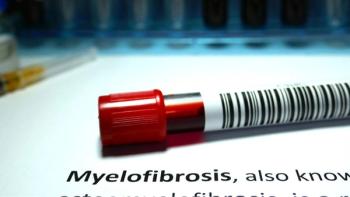
CURExtra - Better Treatments/Better Healthcare
With research focused on targeted therapies that are less toxic, patients with advanced and rare cancers once considered incurable are being diagnosed earlier with better screening and diagnostic tests and living longer with new treatments like Xeloda for advanced or metastatic colorectal cancer.
Annie Gibson, 78, is one of the many cancer survivors that have beaten the odds against cancer, including those that are aggressive, advanced stage and those deemed incurable in the past.
It wasn’t until she first noticed blood and mucus in her stool that doctors diagnosed her aggressive colon cancer. The tumor was large, requiring Gibson to undergo surgery to remove 10 inches of her colon and it appeared the cancer had begun to spread. Cancer cells were found in two of the five lymph nodes examined after the surgery. “The surgeon told me that this was a very serious situation,” says Gibson.
When Gibson met with her oncologist to discuss follow-up adjuvant treatment, she was given the choice of standard intravenous chemotherapy in the hospital or a clinical trial offering Xeloda® (capecitabine), which she could take at home. Not wanting to make the 22-mile round-trip drive from her home in Nashville, Tennessee, to the hospital, Gibson decided on Xeloda. “Even though I knew it was a risk, I was willing to take it because of the distance I live from downtown Nashville, where the hospital is located,” says Gibson. Plus, for many patients, Xeloda doesn’t have the same side effects—hair loss, nausea, diarrhea and fatigue—often associated with standard chemotherapy, which also appealed to Gibson.
“The vanity part of me was happy to hear that it was possible for me not to lose my hair. I wasn’t nauseous and I didn’t experience weakness,” says Gibson, who was back at her secretarial job at her local church just weeks after her surgery.
Gibson did experience hand-foot syndrome—redness and tenderness of the hands and feet that prevents normal activity—a common problem in Xeloda patients. Still, she was able to tolerate the medication with little disruption in her daily life.
Although Xeloda is already approved by the Food and Drug Administration as first-line treatment for metastatic colon and breast cancer, recent study data show the drug is a good alternative to standard chemotherapy in adjuvant (after surgery) treatment as well.
“This is the Golden Era in cancer research,” says Julian Adams, PhD, chief scientific officer for Infinity Pharmaceuticals. “In the past 30 to 40 years, most of cancer’s chemotherapy were really toxic agents and it was a race between can you kill the tumor faster than you kill healthy cells. Now we’re in the era of targeted therapies largely because of a much better understanding of the molecular derangement in the tumor cells. The targeted therapies tend to be not as toxic, much more selective for the tumor and, therefore, you’re trying to treat the cancer almost as a chronic disease with fewer side effects and less damage to the patient.”
Four years after she completed treatment, Gibson remains cancer-free and, although she’s now retired, still lives a full and busy life. “I’m out every day, driving friends around town who can’t drive anymore. I have no restrictions on my diet, and it’s been a wonderful journey for me,” says Gibson, who is not alone in surviving a cancer considered incurable only years ago.
“It’s estimated that at least 50 percent of the 1.5 million people who are diagnosed each year with cancer will be alive five years from now,” says Ellen Stovall, president of the National Coalition for Cancer Survivorship, a patient-led cancer advocacy organization based in Silver Spring, Maryland. The result, says Stovall—herself a cancer survivor—is the convergence of a host of factors including better screening techniques that lead to earlier diagnosis and more precise therapies for specific cancers.
But it’s going to take more then just better treatment to beat cancer, says Paula Sutton, 49, of Riverside, California. It’s going to take better healthcare, too. Diagnosed in early 2005 with infiltrating lobular carcinoma, Sutton says her breast cancer went undiagnosed for years even though the tumor had been showing up on mammograms since she started getting them at the age of 35 because of a family history of breast cancer. She finally discovered the lump herself during a breast self-exam.
Because more than one tumor site showed up on an ultrasound, Sutton’s surgeon recommended a mastectomy. A pathology report of the breast and sentinel node found two more tumor sites and micrometastasis (cancer cells that have spread from the primary tumor to other parts of the body and are too few to be picked up in a screening or diagnostic test) in one node, leading Sutton to decide on a treatment course of four rounds of chemotherapy, followed by six weeks of radiation and tamoxifen.
Sutton believes that if she’d lived in a bigger city, her cancer might have been picked up earlier, resulting in less drastic treatment. “My concern is that those of us who don’t live in a big city aren’t getting as good treatment as we could get if we had the [top] cancer specialists larger cities have,” Sutton says. “Those are the drawbacks to [living in a small town] and being in an HMO.”
“No matter where you live, try to get your care in a place that specializes in what you’re concerned about,” advises Marisa Weiss, MD, an oncologist in Philadelphia, and founder of
And, says Dr. Weiss, while there are many advances in better screening techniques and treatment for breast cancer, it’s still incumbent upon the patient to be his or her own best health advocate, which includes learning about the disease, researching treatment options and getting a second opinion.




